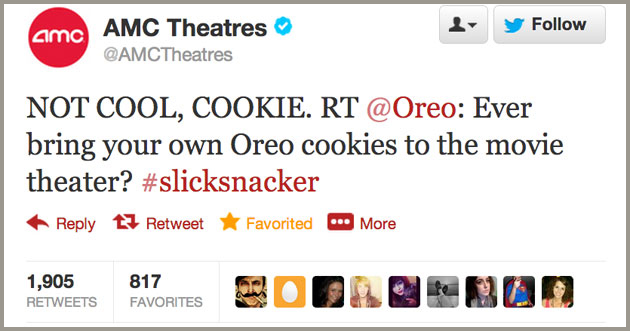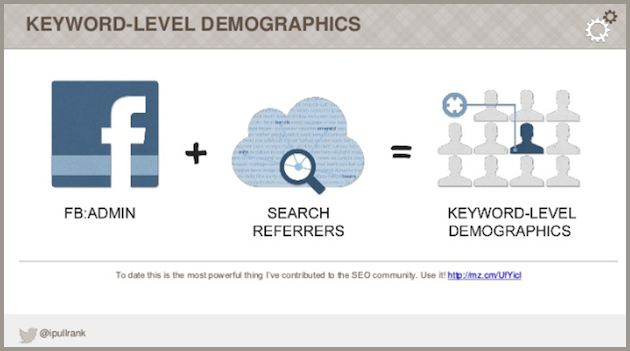Becoming a social media hero is no easy feat.
However, let’s get something straight: When I say “hero” I’m not describing those self-proclaimed social “gurus” or “experts” you’re ignoring in your streams. I’m talking about the people hustling in the trenches every day, the ones behind that piece of content you just had to share, and the brave soldiers executing social strategies with real, quantifiable results.
While going from zero to hero won’t happen overnight, I’ve put together some tips to help you succeed in your quest for social media excellence. Onward!
1. Have a game plan
In order to justify the value of social media, you must develop a strategic plan that outlines objectives and goals, tactics, key metrics and measurement expectations. I’m not saying you have to live and die by the sentences in this Word Doc, but a general guide for how your organization should use social media, and how it aligns with company goals is imperative.
Coca Cola has inspired a culture for creativity with their Content 2020 initiative, which aims for excellence, making the world a better place while still meeting business objectives, and a disproportionate share of pop culture. They’ve established a clear plan and long-term goals with this series of awesome internal videos, and it’s undoubtedly keeping everyone within the company focused on the bigger content picture.
2. Pick the right people to manage your social presence
A social presence cannot grow on its own, so you should never underestimate the importance of an amazing community management team. Whether those people are dedicated or involved in multiple roles is up to you (or your client), but remember to choose wisely. Can they stick to a plan and improvise when necessary? Do they know how to tie social media metrics to business goals? Are they capable of cultivating real relationships? Have you given them ownership of the social media strategy and do you trust them?
Hiring the right kind of people to support your social media profiles is key, especially in an era where a single tweet can have a huge impact on your brand’s image. In fact, it could mean the difference between an awful accident…

…and a cool comeback.

3. Create and use personas
There has been a lot of buzz around personas this year, and for good reasons. As marketers, we need to have a good grip on our audience, as well as their needs and what they’ll respond to before we can start communicating with them on social media channels.
I personally love the idea of mining social media data from Facebook or Pinterest to inform your persona strategy. 60% of the time, it works every time.

Image: Mike King
4. Write content with your audience in mind
After you’ve clearly identified your personas, create content that is specifically tailored to the needs of your audience. If they have questions, you have answers, and you must share your knowledge in a compelling way that begs to be shared in return. Having a well-defined target audience for a piece of content makes the likelihood of success much higher, and a little RCS never hurt anyone either.
5. Make it easy to share, but don’t overwhelm users with choices
If you want people to share your content, make sharing as easy and seamless as possible. However, keep in mind that adding too many social buttons to your pages and posts has the potential to slow things down and cripple decision making. The available sharing options should be informed by the attitudes, motivations and behaviors of your target audience, not a list of “social media best practices.” Some sites are even experimenting with removing buttons altogether, and have noticed increased social traffic as a result.
The Good Insights: Social Sharing Buttons from The Good on Vimeo.
In addition to having the right social sharing options, you’ll also want to make sure your data is structured properly. Studies show that implementing rel=author on your site leads to increased click throughs, visibility and better branding. Thankfully, Raven’s gotcha covered with this collection of everything you ever wanted to know about Schema and more. Phew!
6. Find the best profiles and pages to follow and engage
One of the biggest challenges of growing a social media profile is finding the right people to follow and engage with. While this could be an entire post in itself, I have a few free tools and tips to help you find these profiles and pages.
Followerwonk, Hoosaid and Twiangulate are great tools for quickly searching and sifting through Twitter bios for topics, industry keywords and specific locations. Find People on Google + helps you find and connect with people and brands using Google+.
Did you know you can search Facebook public posts for topics and keywords? It’s a cool way to find pages and people talking about your niche.
Topsy, Amplicate and Social Mention are also interesting tools that give you insight into
conversations about your brand, products or industry topics.
7. Participate on the appropriate social networks for your industry and audience
Brands are often seduced by the social networks that are getting lots of buzz at the moment, but they should stop and decide which social media platforms are right for their business or industry. There’s no “one-size-fits-all” approach, but defining your social media goals and audience will help you identify the best sites to engage on. Rather than getting caught up on user statistics or “top” social networks, find
a couple that fit your business, and start building relationships.
To quickly see if your audience is interacting on a specific social media channel, search for keywords or brand mentions using the tools mentioned in Tip #6. If you discover conversations happening among your target audience, it might be a good network to invest in. Additionally, it’s important to analyze your referral traffic in Google Analytics, and participate on the sites sending you decent traffic. While Pinterest is great for some industries, make sure to ask yourself a few questions before pinning away. If you’re in B2B, learn from other marketers’ experiences.
8. The Golden Rule
This tip is pretty self-explanatory, but imperative nonetheless. Participating in social conversations is a give-and-take, and you should aim to help others before you need their help. Sure, retweeting and sharing their posts is nice, but what about actually adding value to their streams? Answer a question, add your thoughts on their post
, recommend something of theirs to a friend and show you actually care about what they’re saying. Social is all about relationships, and you wouldn’t expect a total stranger to do you any favors, right? Well, unless you happen to run into this guy.
9. Monitoring and management tools
Manually monitoring your social media presence is so 2009. Instead, I rely on a few different tools to help me manage multiple accounts at once, and here are 3 of my “must-haves”:
I use Hootsuite to manage and monitor Twitter profiles. Their advanced search options are perfect for monitoring variations of brand mentions, keywords or #hashtags, and you can also set up streams for lists, @mentions and DMs. Some of my coworkers prefer TweetDeck, but I think the team functionalities of Hootsuite are more on par with my needs.

Raven also has some pretty cool social tools for monitoring Facebook Pages and Twitter Profiles. I especially love the reporting function, as it saves a lot of time during monthly social analysis. At Thunder, we also use Raven’s CRM Tool to keep our outreach team on the same page in terms of prospect details and link management.
Google Alerts and Google Analytics may not be typically included with social media tools, but I’m constantly referring back to Big G to monitor and evaluate my social efforts’ success. I use Google Alerts to passively monitor brand mentions and blog post titles, and I add UTM parameters to all of my social links to evaluate which updates got the most traction.
10. Outline the KPIs that are important for your business or client and report on them
Since you’re awesome and you’ve outlined your social media goals in your strategy, you should have a pretty good idea about which metrics are important for showing success to your team or client. It may be share of voice and reach, or maybe it’s marketing insights and customer support, but identify these KPIs up front and report on them regularly.
Growth in Fans and Followers isn’t always the best indicator of social media success. Earlier this year, Raven Community Manager Courtney Seiter gave a great Social Media ROI presentation at SMX West, and it has some interesting ways to measure social media engagement. Check it out!
11. Have fun and show off your personality!
Hear, hear: This is the most valuable tip of the pack! A social media presence is nothing without a little personality, so learn what works well in your niche and own it. Sometimes the best part of making the rules is breaking them.
Hopefully, these tips inspire you to take your social media presence to the next level. Now, go put the “glad” in “gladiator” and start building meaningful relationships with social media!
Monique Pouget is the Director of Content Marketing at Thunder SEO,
